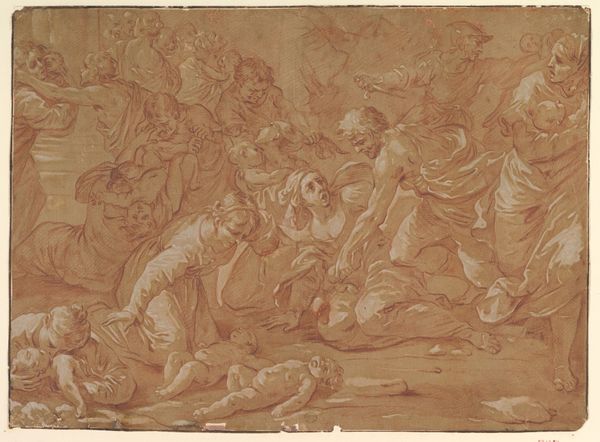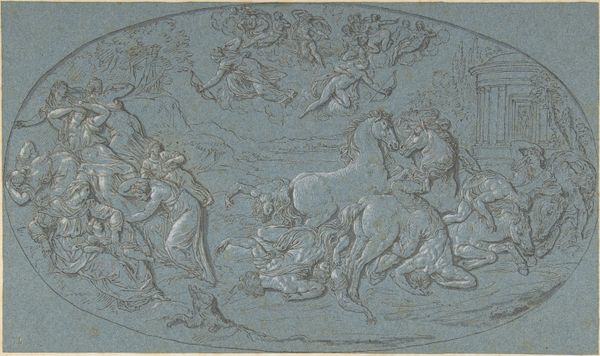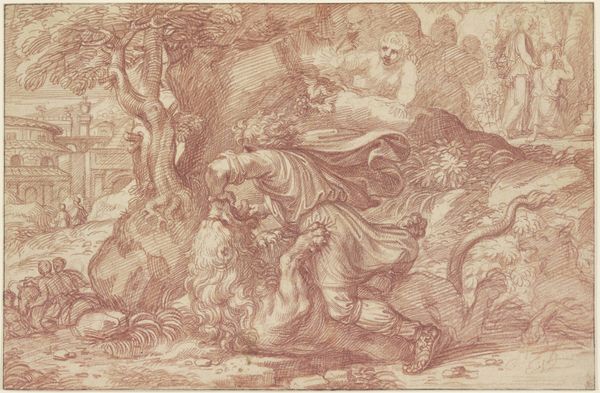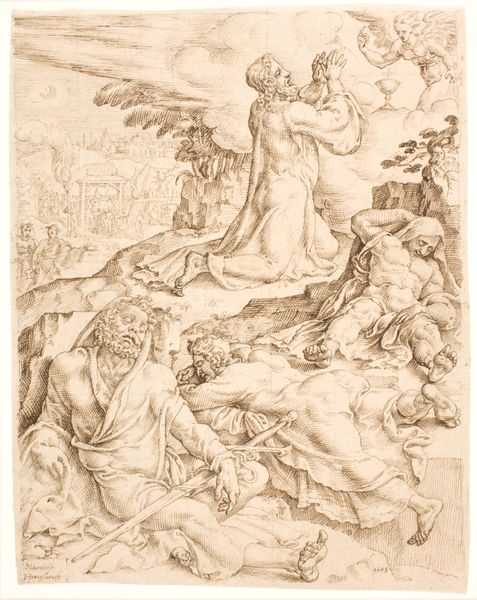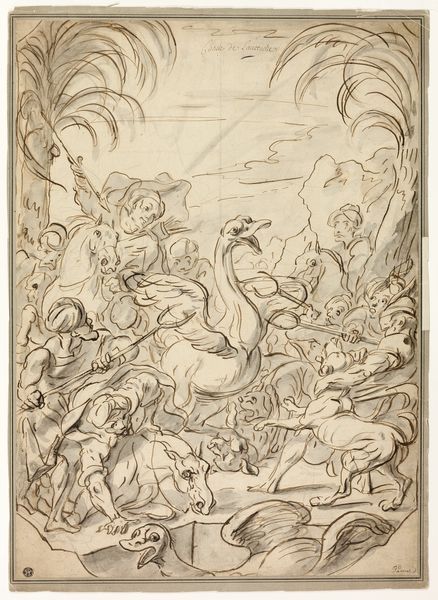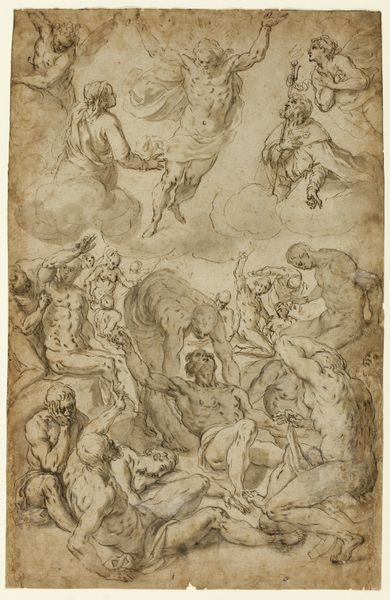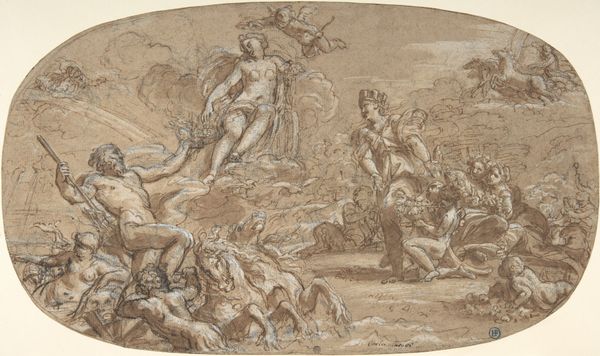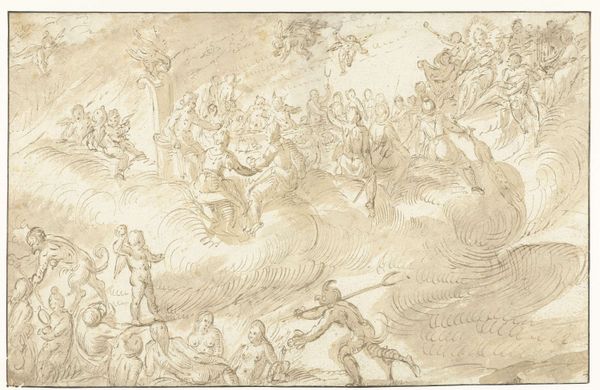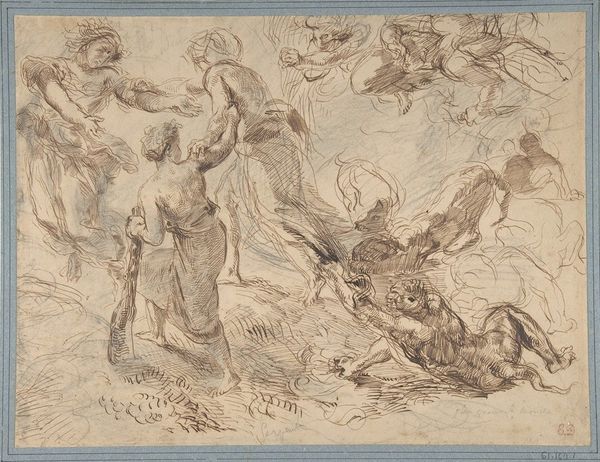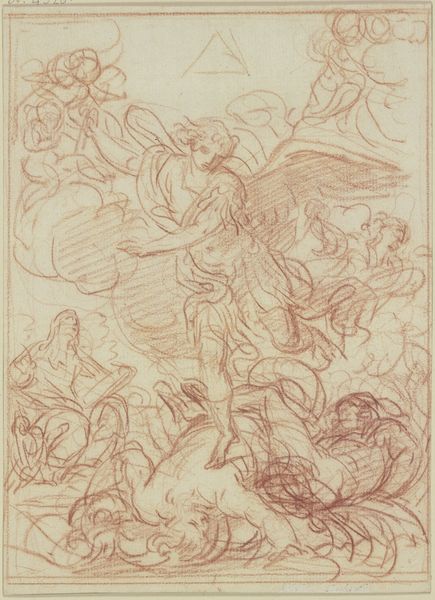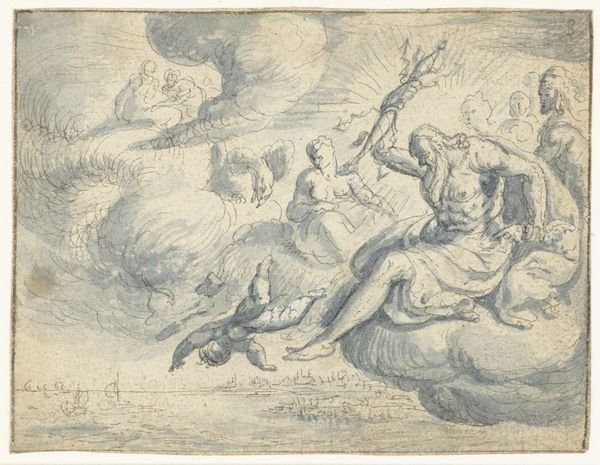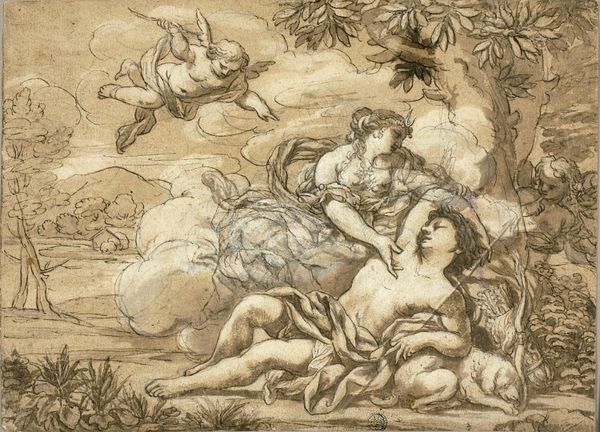
drawing, paper, ink
#
drawing
#
neoclacissism
#
allegory
#
narrative-art
#
ink painting
#
landscape
#
classical-realism
#
figuration
#
paper
#
form
#
ink
#
line
#
history-painting
#
academic-art
#
realism
Dimensions: height 256 mm, width 327 mm
Copyright: Rijks Museum: Open Domain
Editor: So, here we have an ink drawing on paper, *Allegorie op de slag bij Waterloo, 1815*, made by an anonymous artist between 1815 and 1820. The drawing depicts a battle scene with a central figure on horseback and a winged figure above. The chaotic composition definitely gives off a powerful, albeit somewhat idealized, feeling. What stands out to you? Curator: The fascinating thing about this drawing is the way it tries to synthesize the very material reality of war with the aspirations of Neoclassicism. Look at how the artist renders the smoke and chaos of battle. It is not simply a backdrop, but it is the result of the intensive labour involved in warfare: the manufacture of cannons and gunpowder, the sheer physical exertion of soldiers. It's this intense material engagement that creates this swirling scene, a kind of monstrous by-product of production. Editor: That's a really interesting perspective. So you're focusing less on the idealized figure on horseback and more on the *things* that enable that moment of heroism? Curator: Exactly! Think about the costuming, too. Are the uniforms pristine or war-torn? Every detail reflects the immense industrial effort and labor put into producing, equipping, and then deploying this destructive force. The drawing captures a moment in time, but it does so through an intense engagement with the materiality of conflict. Editor: I see what you mean! I guess I hadn't considered the process that goes into creating the chaos depicted, only the chaos itself. Curator: It invites us to think critically about the production of history, not just the narratives we tell about it. How those narratives are crafted using materials and made real. Editor: Thanks for shedding a new light on this. I will certainly think about how materials reflect these grand narratives moving forward.
Comments
No comments
Be the first to comment and join the conversation on the ultimate creative platform.
